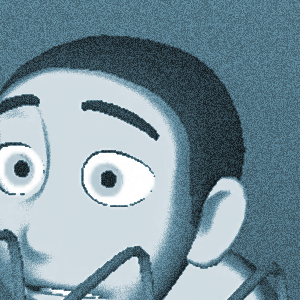Pass It On.
by
 One thing I discovered quickly after I decided to become an animator is how much animators love to share everything single thing about what they do. I found my way in to this somewhat hidden sub-culture – with its budding infrastructure of bulletin boards, blogs, classical archives, modern galleries, and start-up sites teaching the newest of the CG tools – and my mind was instantly blown. I remember feeling both fortunate and privileged to have these resources already available to me in this new age of the Internet, and I soaked them up like a gluttonous sponge. Plus, I inserted myself in to local meetup groups in Chicago, like CATNAP, where novices could interface with pros to learn and create, I tried to form meet ups of my own, and talked my way into an informational interview or two with local studios. And this was all before AnimationMentor hit the scene and spawned many an inspirational blog from students and mentors alike.
One thing I discovered quickly after I decided to become an animator is how much animators love to share everything single thing about what they do. I found my way in to this somewhat hidden sub-culture – with its budding infrastructure of bulletin boards, blogs, classical archives, modern galleries, and start-up sites teaching the newest of the CG tools – and my mind was instantly blown. I remember feeling both fortunate and privileged to have these resources already available to me in this new age of the Internet, and I soaked them up like a gluttonous sponge. Plus, I inserted myself in to local meetup groups in Chicago, like CATNAP, where novices could interface with pros to learn and create, I tried to form meet ups of my own, and talked my way into an informational interview or two with local studios. And this was all before AnimationMentor hit the scene and spawned many an inspirational blog from students and mentors alike.
Since then many online schools have joined the fray, animator blogs have multiplied like tribbles, and independent artists, reputable colleges, and studios are offering workshops galore, as well as sites like 11-second club (inspired by the 10-second club before it) allowing fledgling animators to show off their stuff. Feature film animators are even taking personal time to offer free critiques. It’s all awesome, and I’ve soaked it all in as much as anyone, and will continue to do so. Now, after years of animating for advertising, web and feature film, I find myself in a place to share things, through my classes at iAnimate and my videos – and I love it, for very specific reasons.
Languages fascinate me. Not necessarily the spoken languages of different countries (although, who doesn’t love listening to Italian!) but the various non-verbal languages like graphic shapes, color, movement, body posture, the pitch and volume of a voice, and the micro expressions of a face. The fact that we communicate most of what we feel through non-verbal means is so fun to study. You can, I suspect, live your whole life and continue to notice new ways that humans express with our bodies and with our art. Man, I hope that’s the case. I know it continues to feed what I choose to do for a living.
But that’s not the reason I love to teach. Sensing and recording all that stuff just comes natural, as it does in most of us. The real challenge, I think, is reversing that flow of perception; focusing on those languages we instinctively but unconsciously perceive and reconstituting them back in to words, so someone else (or myself) can record them and store them as tools of their art, or even their life. THAT is fun. It’s fun enough just forming a idea in someone’s head from a carefully chosen combination of words, like a writer or a public speaker can. But to try helping someone really understand the concept of something, either an abstract idea or an actual skill – well that’s just damn cool.
Now I’m not saying I’m an expert at anything like that, or at what I do. Far from it. And I’m not claiming to be a great teacher either. I’m just saying that I enjoy the challenge. Almost as much as I enjoy animation itself. The more I attempt to explain a difficult-to-understand idea – to anyone, about anything – the more I understand it myself. That is a super synnergistically cool thing.
I may be an unusual artist – in that I don’t enjoy chaos very much. I appreciate it, but I don’t enjoy it. I like process. I like method. I like prepping and taping a room before painting. I like to stop to read the directions for Ikea furniture. I like examining the parts closely. It’s not simply in order to build something properly, but it’s that you start learning how to synthesize new things from new combinations of those very familiar parts and pieces. So really understanding how to recognize both the separate parts of something and the way they all work together in any particular process is also totally fascinating.
I love animation for this very reason – because it is a deliberate composite of very familiar parts and pieces in to something new and entertaining. Getting to help other people see the plethora of parts and infinite combinations of pieces is a bonus, and, really, a privilege.
My girlfriend, a talented and successful culinary genius, said something really great the other day, that I will paraphrase if I can get it right. She said, “you don’t succeed at something you’re good at because you’re the best at it. You succeed because you know there are other people who are good at it too, maybe even better than you, and you look at them and learn from what they are doing, and let them inspire you to constantly get better.” Damn right. I don’t think I am the best at what I do. I do, however, think I’ve figured out how to communicate a part of what I do, and I love the challenge of learning how to get better at that.
/k


Thanks for the awesome videos … Animating a Basic Acting Shot and attitudes & acting beats… soon i will buy part 2 and 3, can you please do videos on approaching cartoony pantomime….
Regards
Vj
As always, wise words, Ken. And a very good read 🙂
Great article Ken. I really appreciate the time you take in developing your video tutorials. your lessons are clear and very well put together. they are also very affordable.
Keep up the fantastic work
Great article Ken! I agree completely. It can be addictive to just sit and watch those subtle nuances that everybody makes in their body language, or way they form a mouthshape. Do they talk from the side of their mouth? Do they barely open their mouth to speak etc. Very fun stuff. I look forward to your future blog posts. It is fun to peek inside other animator’s brains and see how they work.
Thanks, Mike!